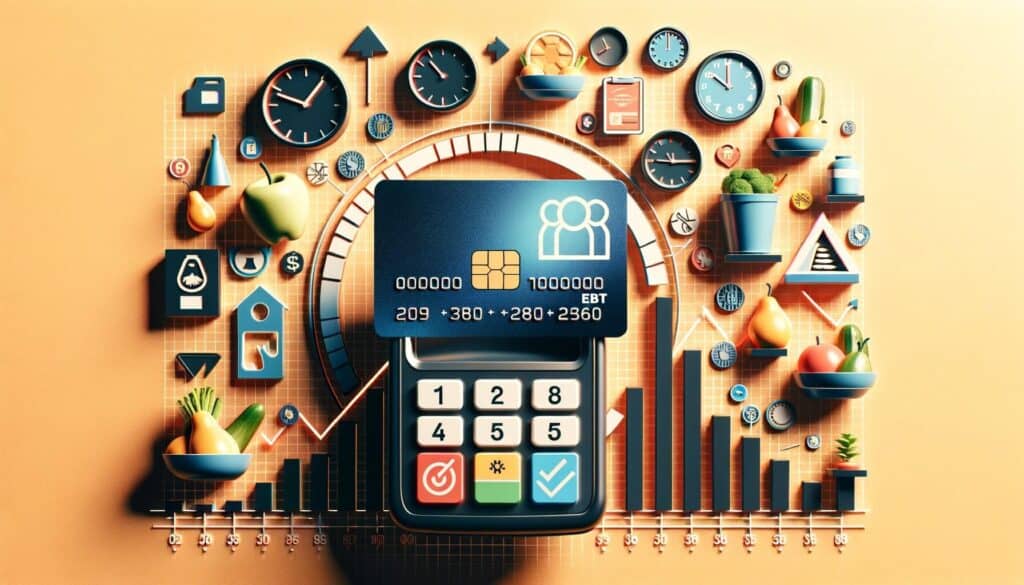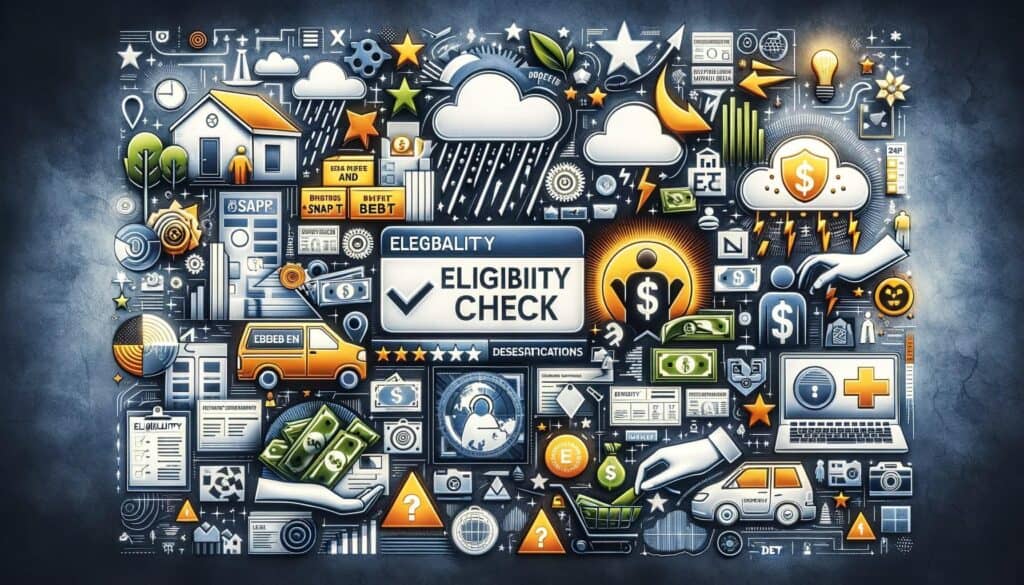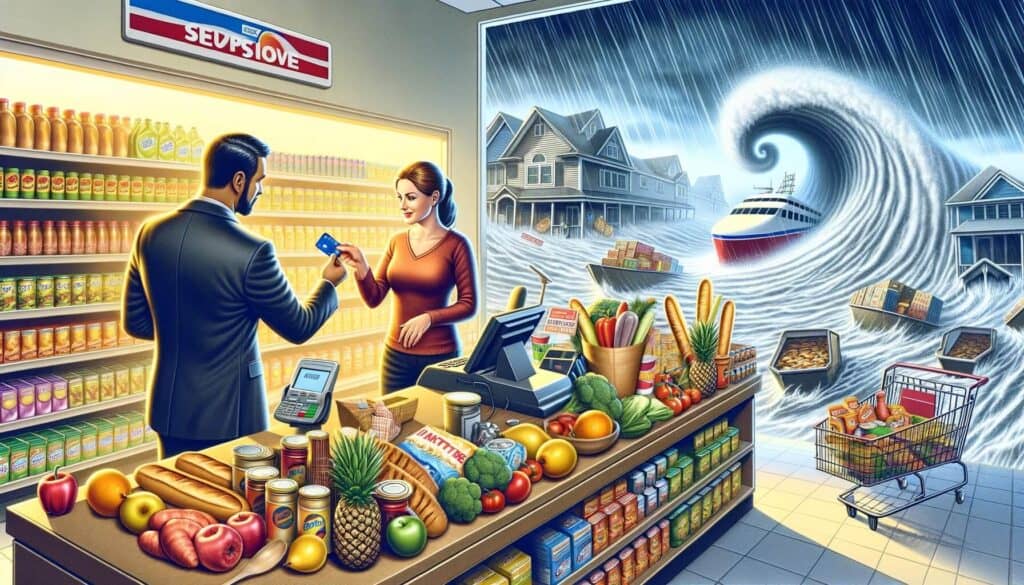
By admin April 16, 2025
In times of disaster, ensuring that individuals and families have access to essential food resources becomes a critical priority. The Supplemental Nutrition Assistance Program (SNAP) provides vital assistance to low-income households, helping them purchase nutritious food through the use of Electronic Benefit Transfer (EBT) cards. However, during times of disaster, special rules and regulations come into play to ensure that SNAP recipients can continue to access their benefits.
In this comprehensive guide, we will explore the special disaster rules for accepting SNAP EBT benefits, including eligibility criteria, application processes, and the role of retailers in facilitating access to these benefits.
What are SNAP EBT Benefits and How Do They Work?

SNAP EBT benefits, also known as food stamps, are a federal assistance program designed to help low-income individuals and families afford nutritious food. The benefits are provided through an electronic debit card, known as an EBT card, which can be used to purchase eligible food items at authorized retailers. The amount of benefits a household receives is determined by factors such as income, household size, and expenses.
The EBT card works similarly to a debit card, with recipients being able to swipe their card at the point of sale and enter a personal identification number (PIN) to complete the transaction. The benefits are automatically loaded onto the card each month, providing recipients with a reliable source of funds to purchase food for themselves and their families.
Special Disaster Rules: An Overview of the Program
During times of disaster, such as hurricanes, floods, or other emergencies, special rules and regulations are put in place to ensure that SNAP recipients can continue to access their benefits. These special disaster rules aim to provide flexibility and support to individuals and families who may be facing additional challenges due to the disaster.
One of the key aspects of the special disaster rules is the ability to waive certain requirements and restrictions that are typically in place for SNAP recipients. For example, the rules may allow for expedited application processing, temporary suspension of work requirements, and the ability to use benefits to purchase hot prepared meals. These waivers are designed to ensure that individuals and families affected by the disaster can quickly and easily access the assistance they need to meet their food needs.
Eligibility Criteria for SNAP EBT Benefits during Disasters

To be eligible for SNAP EBT benefits during a disaster, individuals and families must meet the general eligibility criteria for the program. This includes having a household income below a certain threshold, which varies depending on the size of the household. Additionally, applicants must be U.S. citizens or qualified non-citizens, and they must meet certain asset limits.
During a disaster, additional eligibility criteria may be put in place to ensure that those who have been directly affected by the disaster can access the benefits they need. For example, individuals who have experienced loss of income or property due to the disaster may be given priority for assistance. It is important for individuals and families to stay informed about any specific eligibility criteria that may be in place during a disaster by contacting their local SNAP office or visiting the official SNAP website.
Applying for SNAP EBT Benefits in Disaster Situations: Step-by-Step Guide

Applying for SNAP EBT benefits during a disaster follows a similar process to the regular application process. However, there may be additional steps or expedited procedures in place to ensure that individuals and families can quickly access the assistance they need. Here is a step-by-step guide to applying for SNAP EBT benefits in disaster situations:
1. Gather necessary documents: Before starting the application process, gather all the necessary documents, such as proof of identity, income, and expenses. This may include identification cards, pay stubs, utility bills, and rent receipts.
2. Contact the local SNAP office: Reach out to the local SNAP office to inquire about any special procedures or requirements in place due to the disaster. They will provide guidance on how to proceed with the application process and may be able to expedite the processing of your application.
3. Complete the application: Fill out the SNAP EBT benefits application form, providing accurate and detailed information about your household, income, and expenses. Be sure to include any additional information or documentation related to the disaster, such as proof of loss of income or property.
4. Submit the application: Once the application is complete, submit it to the local SNAP office. If there are any specific instructions for submitting applications during a disaster, follow them accordingly.
5. Attend an interview (if required): In some cases, applicants may be required to attend an interview as part of the application process. This can be done in person, over the phone, or through an online platform, depending on the procedures in place during the disaster.
6. Receive notification of benefits: After the application has been processed, you will receive notification of your eligibility and the amount of benefits you will receive. This notification will also include information on how to access and use your EBT card.
Understanding the Role of Retailers in Accepting SNAP EBT Benefits during Disasters

Retailers play a crucial role in ensuring that SNAP recipients can access their benefits during times of disaster. Authorized retailers are required to accept SNAP EBT cards as a form of payment for eligible food items. However, during a disaster, there may be additional considerations and responsibilities for retailers to ensure smooth transactions and access to benefits.
One of the key responsibilities for retailers is to ensure that their point-of-sale systems are operational and able to accept EBT transactions. This includes having backup power sources, such as generators, in case of power outages. Retailers should also have clear signage indicating that they accept SNAP EBT benefits and provide information on any special disaster rules or waivers that may be in place.
Additionally, retailers should be prepared to handle an increased volume of SNAP transactions during a disaster. This may require additional staff or resources to ensure that customers can be served efficiently. Retailers should also be aware of any temporary changes to the list of eligible food items, such as the ability to purchase hot prepared meals, and ensure that their inventory reflects these changes.
Special Disaster Rules: Key Considerations for Retailers
Retailers accepting SNAP EBT benefits during a disaster should be aware of several key considerations to ensure compliance with the special disaster rules. These considerations include:
1. Training staff: It is important for retailers to train their staff on the special disaster rules and any changes to the SNAP program that may be in effect during a disaster. This will ensure that staff members can provide accurate information to customers and process EBT transactions correctly.
2. Maintaining accurate records: Retailers should keep accurate records of SNAP transactions, including receipts and documentation of any waivers or special rules that were applied. This will help with compliance and reporting requirements.
3. Communicating with customers: Clear communication with customers is essential during a disaster. Retailers should provide information on any changes to the SNAP program, such as the ability to purchase hot prepared meals, and ensure that customers are aware of their rights and responsibilities when using their EBT cards.
4. Reporting issues or concerns: If retailers encounter any issues or concerns related to SNAP EBT benefits during a disaster, they should report them to the appropriate authorities. This may include contacting the local SNAP office or the USDA Food and Nutrition Service.
Common FAQs about Special Disaster Rules for Accepting SNAP EBT Benefits
Q1. Can I use my SNAP EBT benefits to purchase hot prepared meals during a disaster?
Answer: Yes, during a disaster, special rules may be in place that allow SNAP recipients to use their benefits to purchase hot prepared meals. This is to ensure that individuals and families have access to nutritious food, even if they are unable to cook or prepare meals themselves.
Q2. How long do the special disaster rules for accepting SNAP EBT benefits last?
Answer: The duration of the special disaster rules varies depending on the specific disaster and the extent of the impact. These rules are typically in effect for as long as the disaster is declared and the need for assistance continues.
Q3. Can I apply for SNAP EBT benefits if I have been affected by a disaster but do not meet the regular eligibility criteria?
Answer: During a disaster, additional eligibility criteria may be put in place to ensure that those who have been directly affected by the disaster can access the benefits they need. It is important to contact the local SNAP office or visit the official SNAP website to inquire about any specific eligibility criteria that may be in place during a disaster.
Q4. What should I do if my EBT card is lost or damaged during a disaster?
Answer: If your EBT card is lost or damaged during a disaster, contact the local SNAP office immediately to report the issue. They will provide guidance on how to obtain a replacement card and ensure that you can continue to access your benefits.
Q5. Can I use my SNAP EBT benefits to purchase non-food items during a disaster?
Answer: No, SNAP EBT benefits can only be used to purchase eligible food items. Non-food items, such as household supplies or personal care products, cannot be purchased with SNAP benefits.
Conclusion
Special disaster rules for accepting SNAP EBT benefits play a crucial role in ensuring that individuals and families affected by disasters have access to essential food resources. These rules provide flexibility and support to SNAP recipients, allowing them to quickly and easily access the assistance they need during challenging times.
By understanding the eligibility criteria, application process, and the role of retailers in accepting SNAP EBT benefits during disasters, individuals and families can navigate the system with ease and ensure that their food needs are met. It is important for both recipients and retailers to stay informed about any specific rules or waivers that may be in place during a disaster to ensure compliance and smooth transactions. Through effective collaboration and adherence to the special disaster rules, we can ensure that no one goes hungry during times of crisis.